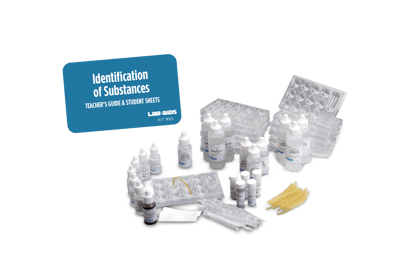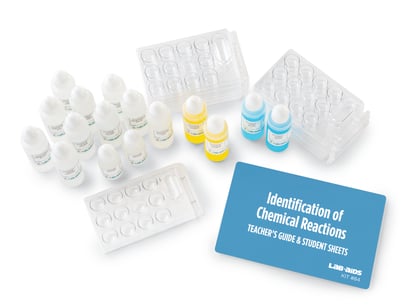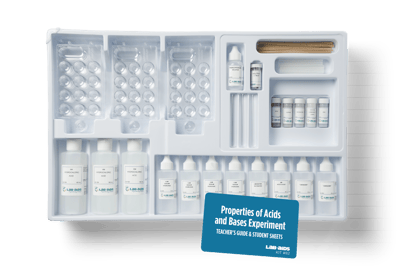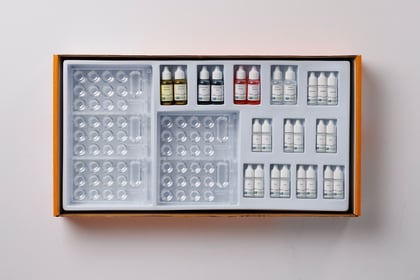Introduction to pH Measurement

This series of simple, highly visual lab activities introduce students to the concept of pH. Students add drops of acid and base to a variety of pH indicators and observe how pH indicators can detect and differentiate acids and bases. Students are also introduced to the concept that acid and base discussions are not limited to chemistry but also extend to applications in biology and the study of the human body.
Details at a Glance
- 1-2 Days | 1-2 ~50 minute class periods
- 1 Activity
- Accommodates 5 classes, each with 12 groups of 3 students
- Consumables service 180 students
- Includes digital resources
Scientific Concepts
•pH indicators can detect and differentiate acids and bases.
•The pH scale is a method of measuring the relative strength of acids and bases.
•pH is an important factor in many biological processes.
KEY VOCABULARY: acid/acidic, hydrogen ion, indicator, pH scale, base/basic (alkaline), hydroxide ion, neutral
Guides & Student Sheets
Our kits and modules provide you with everything you need so you can open, review, and teach the material confidently the next day.
- Comprehensive Teacher Guide with background information, detailed instruction, example data and answers
- Student Sheets with age appropriate background information, full procedure(s), and analysis items
- Materials necessary for the investigation (beyond common classroom items)
- Safety Data Sheets
Kit Components
- 12 Chemplates® w/stir stick
- 1 Hydrochloric acid, Drop control bottle
- 1 Sodium hydroxide, Drop control bottle
- 1 Bromthymol blue , Drop control bottle
- 1 Phenol red, Drop control bottle
- 1 Phenolphthalein, Drop control bottle
- 1 Blue litmus paper, Vial
- 1 Red litmus paper, Vial
- 1 Universal indicator paper, Vial
- 50 Student Guides
- 1 Teacher’s Guide with MSDS
- Not included and needed for instruction: Eyewear.





